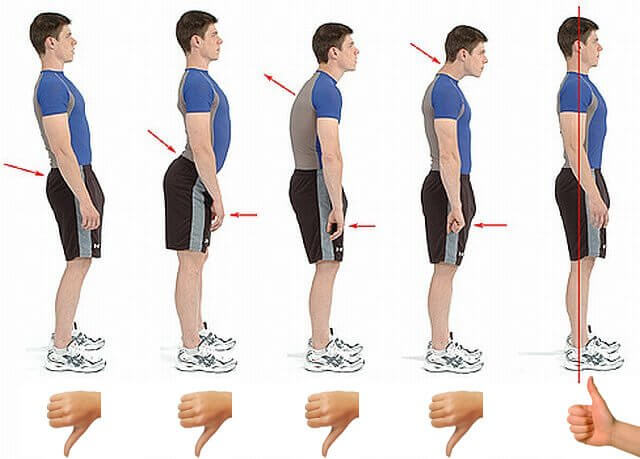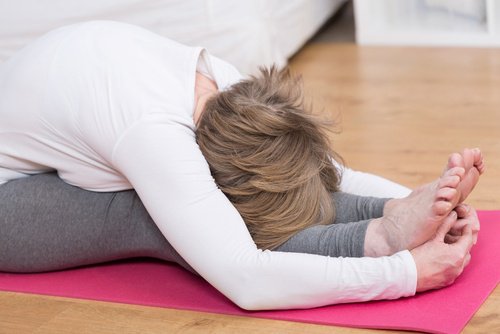6 Great Techniques for Better Posture


Reviewed and approved by the doctor Nelton Abdon Ramos Rojas
Spending hours every day at work sitting at the computer or standing up has consequences for your body. Good posture is vital for your overall health and for avoiding back pain, according to this study (Spanish) from the Matanzas University of Medical Sciences in Cuba.
So, in today’s article, we’re going to share some techniques for achieving better posture.
What influences the position of your spine?

Women frequently suffer from a misalignment of the hip. How does that happen? When they’re standing at rest, they often put all of their weight on one of their legs. Wearing high heels or carrying heavy shoulder bags can make the problem even worse.
Poor posture is becoming more common thanks to the type of work people have nowadays. Of course, there are also growing rates of obesity, physical inactivity, and excessive use of technology (phones, tablets, laptops, etc).
When you tilt your head down to send a message or check email and social media it causes your spine to slouch and your body to lean forward. Did you know that this is one of the main reasons people suffer from neck pain?
We think you may also enjoy reading this article: 3 Yoga Poses to Relieve Neck Tension
What’s the ideal posture?
Some people only focus on how they hold their back and shoulders while they’re exercising or lifting weights. But posture is something you need to pay attention to at all times and places. It doesn’t matter whether you’re at the grocery store, riding the subway, or watching TV at home.
Below, we’re going to give some examples of moments in the day that you probably don’t pay attention to your posture:
When sitting
The soles of your feet should be flat on the floor, your back straight, and your shoulders down and back. If you cross your legs (very common in women) it could disrupt your circulation, leading to swelling and fatigue.

When standing
Your knees should be slightly bent and your chest opens so that your abdominal muscles can expand as you breathe. This also helps distribute your weight between your legs and chest.
When walking
According to this study from the University of Costa Rica, walking is a great activity, but you need to pay attention to your posture. Your neck and head should be upright – don’t look down, because it can cause neck pain. Make sure your heel lands first, followed by your toes.
When sleeping
The best sleeping position is on your side with your knees bent. This helps keep your spine straight. You also need to use a high-quality mattress and pillows (changing them from time to time is important too).

Good posture when driving
Better posture benefits your spine and your safety. When you hold yourself upright there’s less of a chance you’ll be injured in the event of an accident. Good driving postures mean not leaning back against your seat or resting your head on the headrest. Adjust the seat so you can reach the pedals easily without having to bend forward.
What techniques can you do to achieve better posture?
There are several techniques that can help you keep your back straight and get a better overall posture. At first, it might be a little hard to remember to “sit up straight,” and your spine or muscles might even be sore because they’re not used to it. But the benefits will outweigh the initial discomfort. Here are some effective options:
Imagining that there’s a rope holding you up
This is frequently taught in yoga or Pilates class. You have to imagine that a rope is leading from the top of your head to the ceiling.
Put tape on your back
You’ll need to ask a friend for help with this one. Make an X on your back using masking tape, starting at the right shoulder. Cross the tape to your left hip, across the back of your waist, and then from your right hip to your left shoulder.
This technique will help you maintain your posture. Just remember: it’s important to keep your shoulders back when you apply the tape.
Like this article? You may also like to read: Relieve Back Pain with a Simple Breathing Technique
Balance a book on your head
This technique was used for years to teach young girls how they should walk. The idea is that you keep your head and neck straight, and don’t look down. It also keeps you from letting your shoulders sag or droop.
Pay attention to your calves
Posture isn’t just something that affects the spine – it’s part of your entire body. Your legs support your entire body weight, and your calves expend the most effort.
Sit on the floor, stretch out your legs, and lean forward to touch your toes. This is an excellent stretch for your back, shoulders, and neck, while also strengthening the muscles of the calves and abdomen.

Take breaks
This is one of the most common-sense techniques for better posture. If you spend all day at work sitting at a desk, try to get up occasionally and walk around. Whenever you get up, do a few laps around your desk, move your arms, and roll your shoulders and hips. When you’re sitting, put your legs up and keep your back straight and shoulders relaxed.
Look in the mirror
A great way to know if you’re keeping a good posture is by looking at yourself. Look into a mirror, sit up straight, and see how you look. This will help you make sure you’re doing it right.
In conclusion: if you pay more attention to your posture and practice some of these techniques, your body will thank you!
This text is provided for informational purposes only and does not replace consultation with a professional. If in doubt, consult your specialist.








